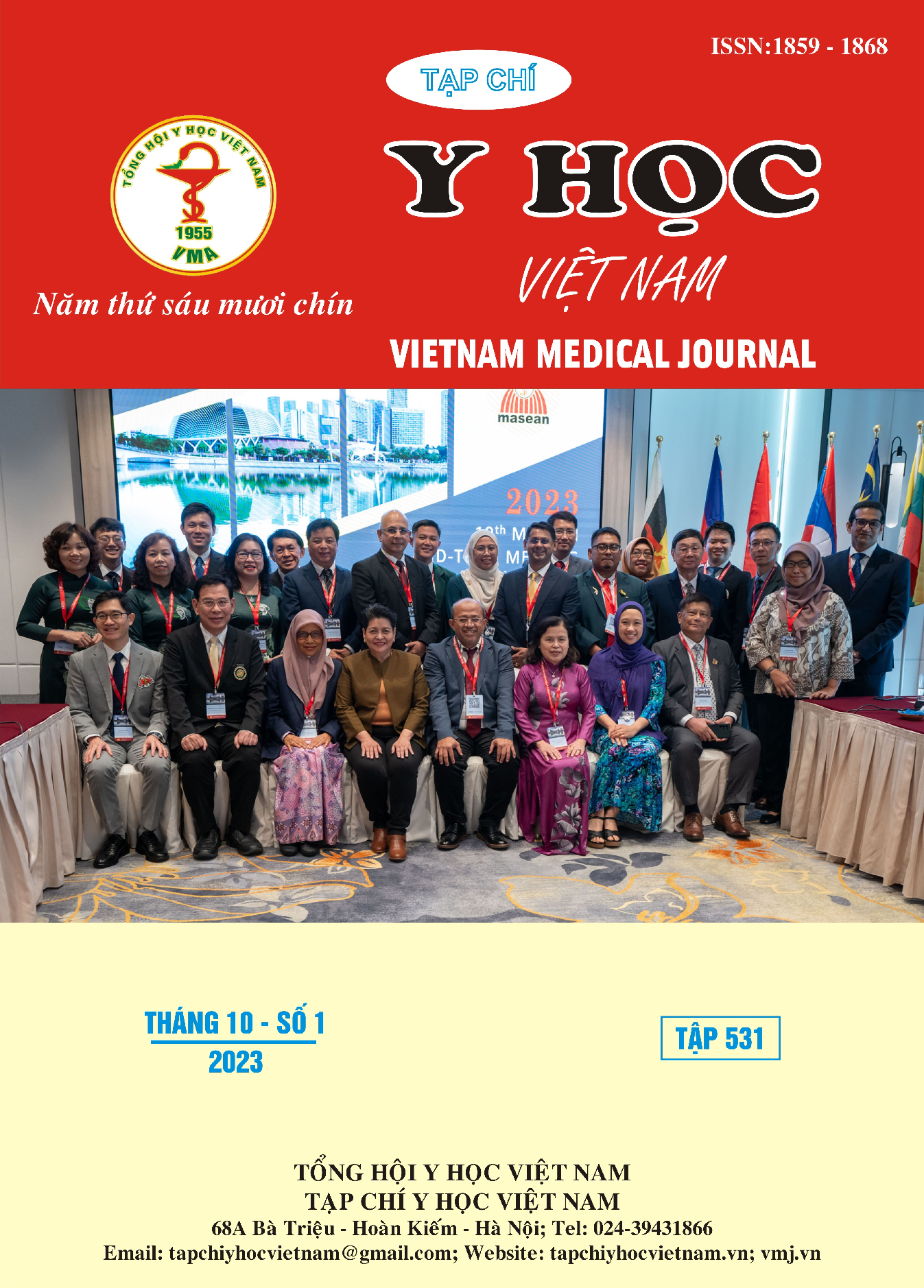PHÂN BỐ, TẬP TÍNH TRÚ ĐẬU CỦA MUỖI AE. AEGYPTI VÀ AE. ALBOPICTUS Ở TỈNH THỪA THIÊN - HUẾ
Nội dung chính của bài viết
Tóm tắt
Muỗi, bọ gậy Ae. aegypti và Ae. albopictus được thu thập ở thành phố Huế và thị xã Hương Thủy của tỉnh Thừa Thiên- Huế. Kết quả điều tra cho thấy, muỗi Ae. aegypti phân bố chủ yếu ở trong nhà (96,75%), phân bố ở ngoài nhà ít hơn rất nhiều so với ở trong nhà với 3,25%. Muỗi Ae. albopictus ưa sống và hoạt động ở ngoài nhà với 57,14%, sống và hoạt động trong nhà là 42,86%. Trong không gian trong nhà cả 2 loài muỗi ưa trú đậu chủ yếu ở phòng ngủ (Ae. aegypti 70%, Ae. albopictus 61%), tiếp theo là phòng khách, nhà vệ sinh, phòng bếp, phòng khác. Ae. aegypti và Ae. albopictus đều trú đậu chủ yếu ở độ từ 0,5-1m (49,6%). Hai loài đều ưa trú đậu trên các giá thể có chất liệu vải nhất (Ae. aegypti 67%, Ae. albopictus 29%) và trên các giá thể tối màu (Ae. aegypti 62%, Ae. albopictus 50%). Bọ gậy của hai loài được tìm thấy nhiều nhất trong dụng cụ phế thải ở ngoài nhà (Ae. aegypti 27%, Ae. albopictus 59%).
Chi tiết bài viết
Từ khóa
Ae. aegypti, Ae. albopictus, tập tính trú đậu muỗi Aedes, phân bố muỗi Aedes
Tài liệu tham khảo
2. Đỗ Văn Nguyên, Nguyễn Xuân Quang (2014), Đặc điểm phân bố và hoạt động của hai loài muỗi Ae. aegypti và Ae. albopictus tại tỉnh Bình Định. Hội nghị khoa học toàn quốc về sinh thái và tài nguyên sinh vật lần thứ 6. 1534- 1539.
3. Nguyễn Khắc Lực, Nguyễn Thị Vân, Vũ Xuân Nghĩa (2013), Nghiên cứu một số đặc điểm về phân bố, tập tính sinh thái của muỗi Aedes aegypti và Aedes albopictus tại khu vực Hà Nội. Tạp chí Y học thực hành, 6(874): 31-33.
4. Dave D Chadee (2013), Resting behaviour of Aedes aegypti in Trinidad: with evidence for the re-introduction of indoor residual spraying (IRS) for dengue control. Parasites & Vectors, 6: 255.
5. Dzul-Manzanilla F, Ibarra-López J, Bibiano Marín W, et al (2017), Indoor Resting Behavior of Aedes aegypti (Diptera: Culicidae) in Acapulco, Mexico. J Med Entomol, 54(2): 01-504.
6. Edgar Koyoc-Cardeña, Anuar Medina-Barreiro, Azael Cohuo-Rodríguez, et al (2019), Estimating absolute indoor density of Aedes aegypti using removal sampling. Parasit Vectors, 12(1): 250.
7. Krajana Tainchum, Suppaluck Polsomboon, John P. Grieco, et al (2013), Comparison of Aedes aegypti (Diptera: Culicidae) Resting Behavior on Two Fabric Types Under Consideration for Insecticide Treatment in a Push-Pull Strategy. Journal of Medical Entomology, 50(1): p. 59-68.
8. Mahmoud Kamal, Mohamed A. Kenawy, Magda Hassan Rady, et al (2018), Mapping the global potential distributions of two arboviral vectors Aedes aegypti and Ae. albopictus under changing climate. PLoS ONE, 13: e0210122.
9. Oliver J. Brady, and Simon I. Hay (2019), The Global Expansion of Dengue: How Aedes aegypti Mosquitoes Enabled the First Pandemic Arbovirus. Annual Review of Entomology, 65: 1-18.


